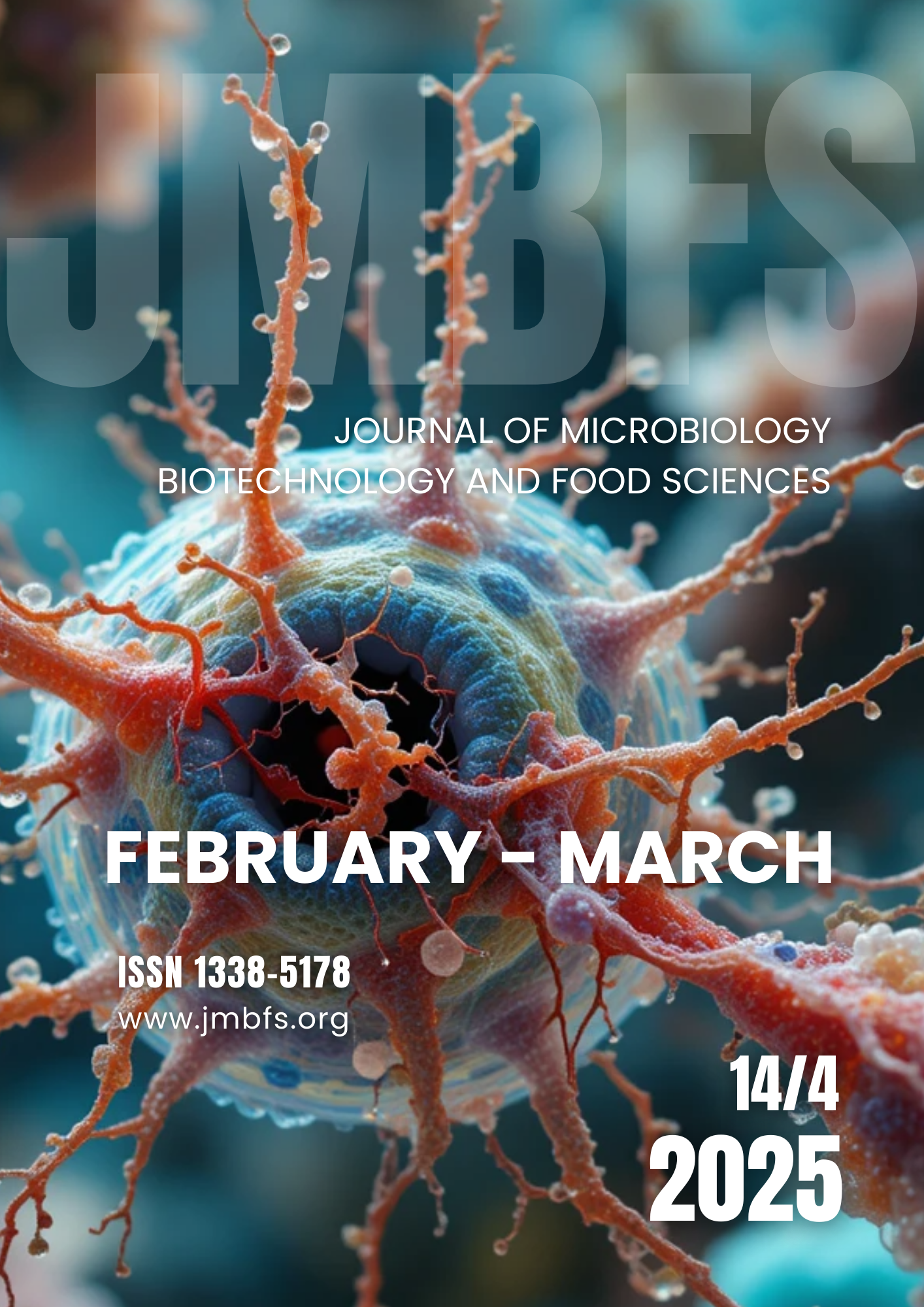IMPACT OF ROSMARINUS OFFICINALIS ON THE MITOCHONDRIAL-DEPENDENT APOPTOTIC PATHWAY IN NICKEL-INDUCED HEPATOTOXICITY IN RATS
DOI:
https://doi.org/10.55251/jmbfs.11234Keywords:
Apoptosis, BcL-2 family protein, mitochondrial membrane potential (ΔΨm), nickel chloride (NiCl2), Rosmarinus officinalis, Oxidative stressAbstract
Nickel and its compounds are common environmental pollutants that may induce hepatotoxicity. Oxidation stress has been proposed as a possible mechanism implicated in this toxicity. The aim of this study was to evaluate the protective effect of Rosmarinus officinalis (RO) extract against NiCl2-induced hepatotoxicity by inhibiting mitochondrial-dependent apoptosis. To achieve this objective, 24 male rats were divided into four groups, each containing six rats. The first group was used as a control, the second was treated with RO extract (RO-E), the third was treated with NiCL2 (10 mg/kg b.w.), and the fourth group was pre-treated with RO-E and then re-treated with NiCl2 after 2 hours for 28 days. Oral administration of NiCl2 disrupts the redox state of liver tissue through the generation of reactive oxygen species (ROS), depletion of glutathione (GSH), breakdown of mitochondrial membrane potential (ΔΨm), and release of cytochrome c. This leads to the activation of the mitochondrial apoptotic pathway. The activity of proteins from the BcL-2 family can be modulated by inhibiting the expression of the anti-apoptotic protein BcL-2 and increasing the expression of the pro-apoptotic proteins Bax and Bad. This leads to an increase in the activity of caspase-3 and 9, and alters the membrane integrity of hepatocytes, resulting in histohepatic changes and an increase in AST, ALT and LDH levels. Pre-treatment with Rosmarinus officinalis extract can ameliorate oxidative hepatotoxicity and NiCl2-induced apoptosis due to its antioxidant capacity. These findings suggest that Rosmarinus officinalis has the potential to protect liver tissue and could be used as a preventive agent against oxidative stress and NiCl2-induced apoptosis.
Downloads
Downloads
Published
How to Cite
Issue
Section
License
Copyright (c) 2023 Abdelkarim Benkhedir, Salim Gasmi, Hichem Saker, Samira Boussekine

This work is licensed under a Creative Commons Attribution 4.0 International License.
All papers published in the Journal of Microbiology, Biotechnology and Food Sciences are published under a CC-BY licence (CC-BY 4.0). Published materials can be shared (copy and redistribute the material in any medium or format) and adapted (remix, transform, and build upon the material for any purpose, even commercially) with specifying the author(s).





